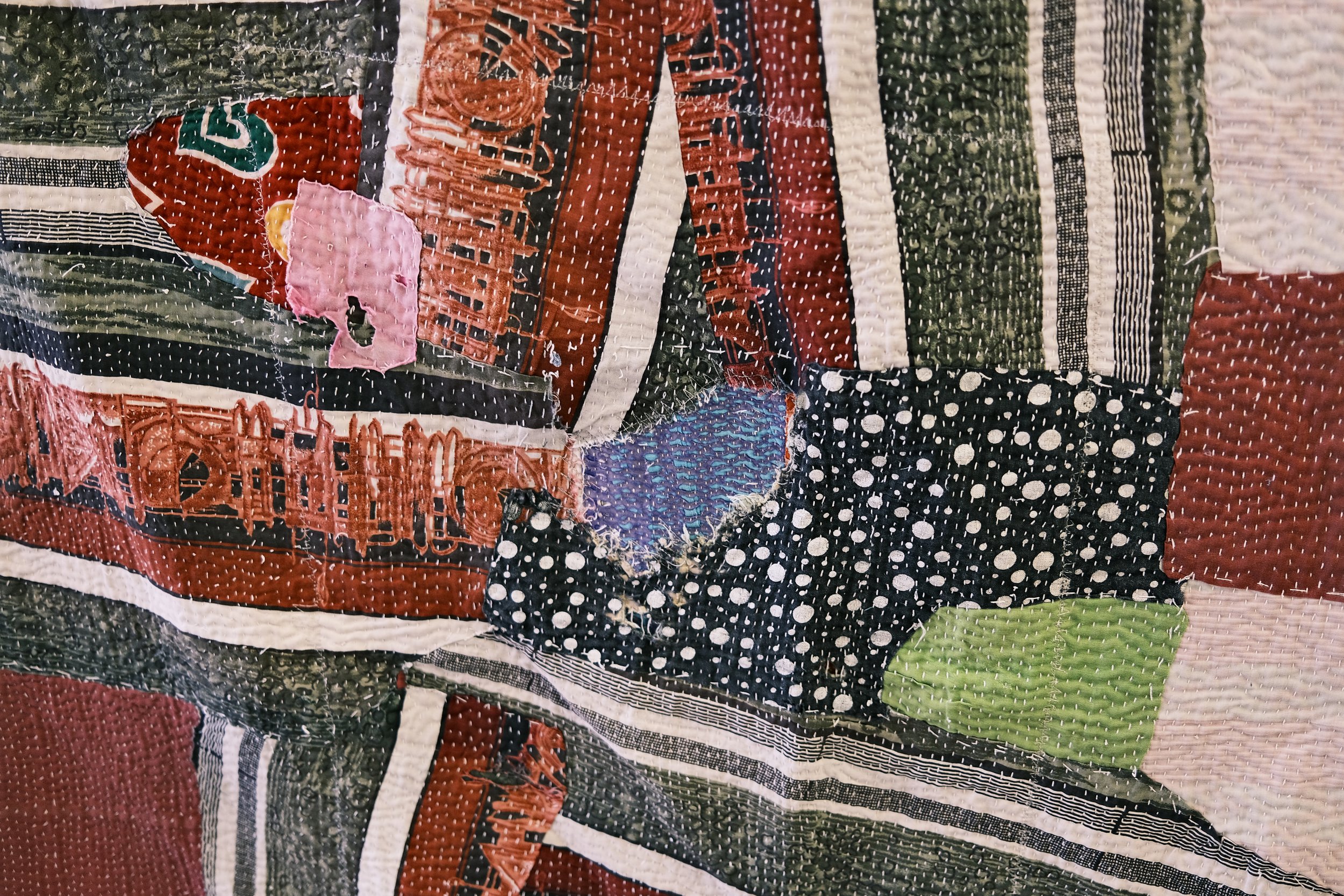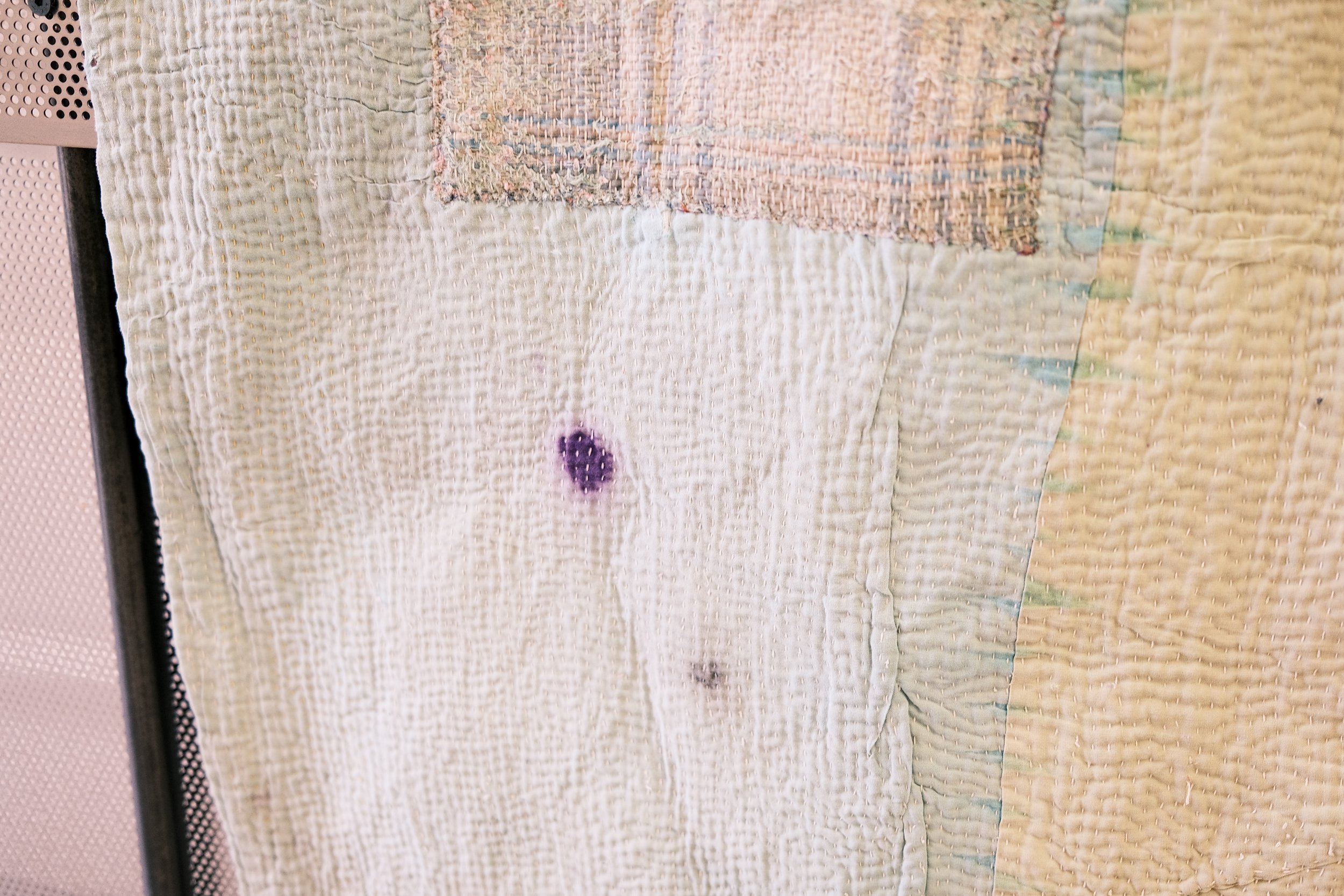Stripes and hearts kantha quilt
While the word kantha has no certain etymological root, it is believed to be derived from the Sanskrit word kontha, meaning rags. One of the oldest forms of embroidery originating from India, its origins can be traced back to the pre-Vedic age (prior to 1500 BCE)
Originating in Bangladesh, women have been the soul crafts people of these quilts, mostly being used for their children or as dowry pieces, being passed down from generation to generation.
Made of old sari’s and recycled fabrics from the home, kantha quilts were made in every home. With every home having at least several per person.
Disclaimer: Items may have marks and damage due to age.
While the word kantha has no certain etymological root, it is believed to be derived from the Sanskrit word kontha, meaning rags. One of the oldest forms of embroidery originating from India, its origins can be traced back to the pre-Vedic age (prior to 1500 BCE)
Originating in Bangladesh, women have been the soul crafts people of these quilts, mostly being used for their children or as dowry pieces, being passed down from generation to generation.
Made of old sari’s and recycled fabrics from the home, kantha quilts were made in every home. With every home having at least several per person.
Disclaimer: Items may have marks and damage due to age.
While the word kantha has no certain etymological root, it is believed to be derived from the Sanskrit word kontha, meaning rags. One of the oldest forms of embroidery originating from India, its origins can be traced back to the pre-Vedic age (prior to 1500 BCE)
Originating in Bangladesh, women have been the soul crafts people of these quilts, mostly being used for their children or as dowry pieces, being passed down from generation to generation.
Made of old sari’s and recycled fabrics from the home, kantha quilts were made in every home. With every home having at least several per person.
Disclaimer: Items may have marks and damage due to age.



